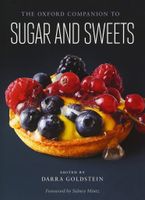Advertisement
Honey
Published 2015
Honey was mankind’s earliest and most potent form of sweetness and remained so in the Western world until the plantation system of sugar production developed in the seventeenth century and the price of sugar fell. See plantations, sugar. Honey lost further ground as a sweetener when the process of extracting sugar from sugar beets was perfected in the early nineteenth century. See sugar beets.


